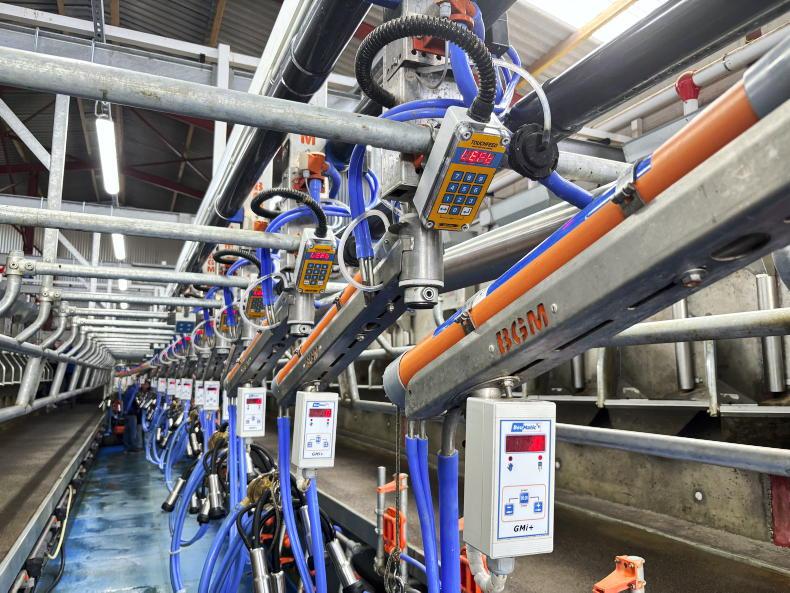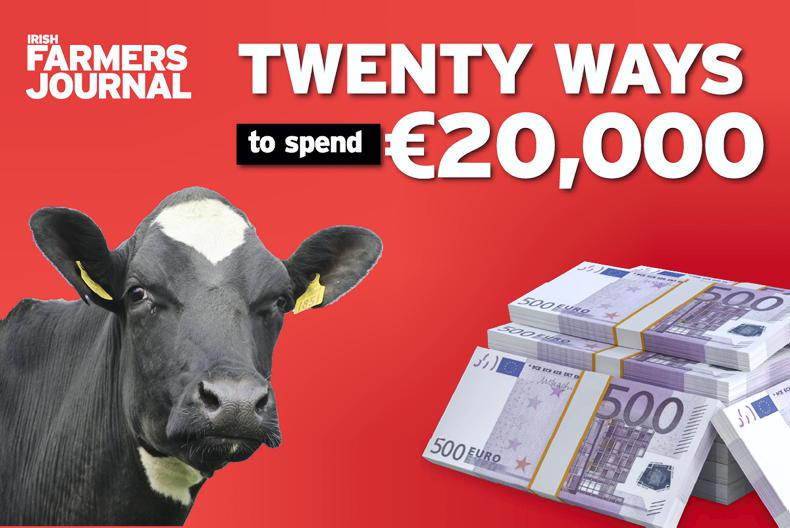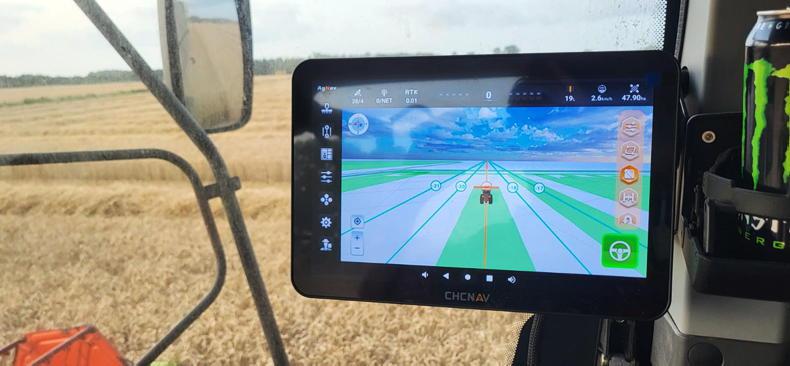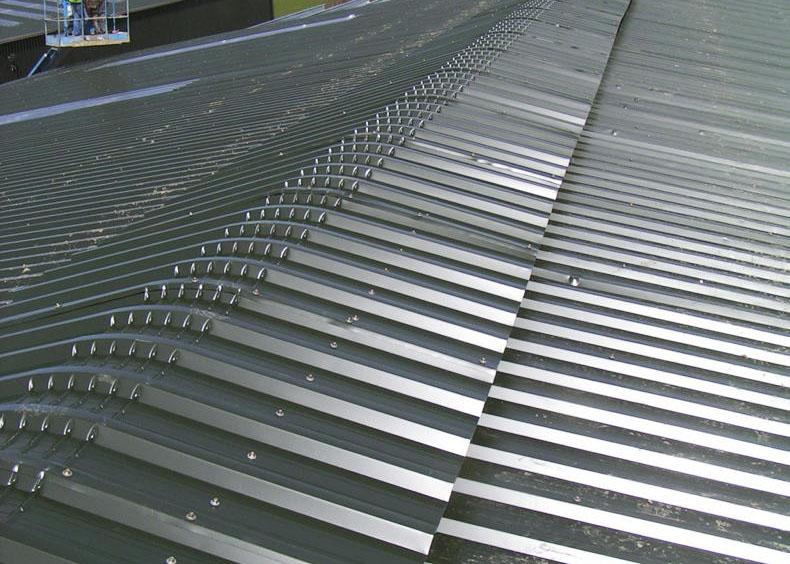Making the move from sucklers to dairy is a big decision for any farmer to make. There are lots of decisions to make around buying stock, building milking parlours and planning investments in housing and infrastructure.
All too often too much is spent on one area, reducing the amount of money available for investment in other areas.
Another common mistake is that poor quality cows are purchased day one, meaning the herd is on the backfoot in terms of performance for ever more.
None of these issues were encountered on the Smith farm near Bailieborough in Co Cavan who got into dairying at the start of 2024.
Investment has been carefully planned and high EBI Jersey/Kiwi cross cows purchased which will deliver in the long term.
Asked why he got into dairying, James Smith says that he likes milking cows and wanted to be a full-time farmer, so dairy was the logical route. The now 22-year-old began converting the farm in 2023 after having completed his green cert at Ballyhaise Agricultural College, so he wasn’t hanging around to pursue his dream.
James is farming in partnership with his mother Sandra and the pair milked 68 cows on the 42ha milking platform in 2024, with plans to go to 80 cows next year and then potentially 100 cows the year after.
The land is good quality dry and free draining, typical of the east Cavan region near Virginia. James has a plan in place to get more of the land reseeded and improve soil fertility over the coming years.
Parlour
A new 10-unit Dairymaster parlour was constructed on a greenfield site at the edge of the farmyard and next to the cubicle shed.
The building is a lean-to that’s bright and airy with plenty of natural light coming into the milking parlour.
While there are 10 units installed, there is space for six more in time if desired. James says that the reason they went with 10 is that the TAMS III grant is only available for 10 units, but he also says that any more than 10 units wasn’t really necessary given the planned number of cows to be milked.
“The parlour is finished to the back, so the extra space is at the front of the parlour and the stall-work and milk line is already in place, so if extra units are installed it’s only a matter of drilling into the existing milk and vacuum lines,” James says.
He also says that he didn’t want cows lining up to come in for milking on the wrong side when it’s the last row to be milked, which makes sense. Air gates at the front and back can be operated from anywhere in the pit to let cows in and let them out.
The plant is well equipped with automatic cluster removers, swing over arms and the Dairymaster Commander unit controller. Additional programmes can be added to this in time such as a drafting gate. Milk indicators are also installed but not used for milk recording. James went for silicone tubing on the clusters, which he says is brighter looking and will last longer than traditional black rubber.
“We were originally going to put in Dairymaster batch feeders but in the end decided to go with the Dairymaster higher spec automatic feeders as we felt we were getting a good deal on them.
We’re only feeding meal at a flat rate but in time we could upgrade to a feed to yield system,” James says.
The feed is dispensed into Dairymaster mangers which James says are a great job as they have a barrier for the cows’ head which prevents the cows from jumping into the troughs, something he would have seen happening on other farms he has milked on.
He says it was particularly useful this year as all the herd was heifers, but he says they were very stable in the parlour.
There are variable speed vacuum and milk pumps installed and an automatic wash unit too. The parlour is set up for 2’6” centres and cows have the option of turning left or right in order to exit the parlour, depending on what side of the farm the cows are going to.
A large L-shaped slatted tank was constructed to the side and back of the parlour which is used as additional slurry storage and for soiled water.
In time, James says they will build a handling unit on it for drafting cows for AI. All of the soiled water from the milking parlour and washing up goes into this tank also.
The shed is tall, standing at 25ft above ground level at the highest point. James says that the initial plan was to put an 8ft high ceiling in the dairy, buy the tank people suggested that a 10ft ceiling would be better if there was ever repair work to be done on the bulk tank such as removing the motor or propeller.
In the end, 10ft high walls were put in throughout but that meant that the loft area above the dairy was going to be low, so James decided to raise the shed by 3ft.

Mother and son duo Sandra and James Smith in their new Dairymaster parlour
The loft area has proved useful, with James using it as the plant room housing the motors, wash down pump and water storage tank.
This tank is itself an old bulk tank and the water from the plate cooler is recycled into this tank.
James and Sandra are delighted with the build and their move to dairy with the first year having exceeded their expectations. The herd delivered 370kg MS/cow to Lakeland Dairies, which isn’t bad going considering they are all heifers.

The 8,000l Liscarrol bulk tank is good for three day collection.
James credits Cookstown Dairy Services for installing the Dairymaster plant and looking after all the plumbing works. Renihan’s installed the 8,000l Liscarrol bulk tank while local builder Brian Donnelly did the concrete work.
The cost of the plant came to €87,000 excluding VAT. The concrete work above ground came to a total of €50,000 excluding VAT between builder and concrete while the large slatted tank cost €64,000 excluding VAT.

The rear of the parlour is open with air operated back gates.
The total cost of the investment was reduced as a partnership TAMS grant was claimed with James qualifying under the young farmer category.

A large L shaped slatted tank is built along the edge of the parlour and a feed barrier means that cows can be buffer fed there.
One of the words of advice from Sandra is to make sure all the paperwork is in order before attempting to do anything.

James went for silicone milk and vacuum tubes.
She says that the planning permission has to be in place before the bank will lend the money and that there is a lot of administration and time involved in drawing down the TAMS grant. A 12-month bridging loan for the grant would be sensible, she says.
In short
James and Sandra Smith are new entrants to dairying, milking 68 cows in 2024 in their new 10-unit milking parlour. The Dairymaster parlour is high spec with ACR’s, milk indicators and the high spec Dairymaster meal feeders. There is space for six more units if required and the Smiths intend to increase the herd to 100 cows over time.
Making the move from sucklers to dairy is a big decision for any farmer to make. There are lots of decisions to make around buying stock, building milking parlours and planning investments in housing and infrastructure.
All too often too much is spent on one area, reducing the amount of money available for investment in other areas.
Another common mistake is that poor quality cows are purchased day one, meaning the herd is on the backfoot in terms of performance for ever more.
None of these issues were encountered on the Smith farm near Bailieborough in Co Cavan who got into dairying at the start of 2024.
Investment has been carefully planned and high EBI Jersey/Kiwi cross cows purchased which will deliver in the long term.
Asked why he got into dairying, James Smith says that he likes milking cows and wanted to be a full-time farmer, so dairy was the logical route. The now 22-year-old began converting the farm in 2023 after having completed his green cert at Ballyhaise Agricultural College, so he wasn’t hanging around to pursue his dream.
James is farming in partnership with his mother Sandra and the pair milked 68 cows on the 42ha milking platform in 2024, with plans to go to 80 cows next year and then potentially 100 cows the year after.
The land is good quality dry and free draining, typical of the east Cavan region near Virginia. James has a plan in place to get more of the land reseeded and improve soil fertility over the coming years.
Parlour
A new 10-unit Dairymaster parlour was constructed on a greenfield site at the edge of the farmyard and next to the cubicle shed.
The building is a lean-to that’s bright and airy with plenty of natural light coming into the milking parlour.
While there are 10 units installed, there is space for six more in time if desired. James says that the reason they went with 10 is that the TAMS III grant is only available for 10 units, but he also says that any more than 10 units wasn’t really necessary given the planned number of cows to be milked.
“The parlour is finished to the back, so the extra space is at the front of the parlour and the stall-work and milk line is already in place, so if extra units are installed it’s only a matter of drilling into the existing milk and vacuum lines,” James says.
He also says that he didn’t want cows lining up to come in for milking on the wrong side when it’s the last row to be milked, which makes sense. Air gates at the front and back can be operated from anywhere in the pit to let cows in and let them out.
The plant is well equipped with automatic cluster removers, swing over arms and the Dairymaster Commander unit controller. Additional programmes can be added to this in time such as a drafting gate. Milk indicators are also installed but not used for milk recording. James went for silicone tubing on the clusters, which he says is brighter looking and will last longer than traditional black rubber.
“We were originally going to put in Dairymaster batch feeders but in the end decided to go with the Dairymaster higher spec automatic feeders as we felt we were getting a good deal on them.
We’re only feeding meal at a flat rate but in time we could upgrade to a feed to yield system,” James says.
The feed is dispensed into Dairymaster mangers which James says are a great job as they have a barrier for the cows’ head which prevents the cows from jumping into the troughs, something he would have seen happening on other farms he has milked on.
He says it was particularly useful this year as all the herd was heifers, but he says they were very stable in the parlour.
There are variable speed vacuum and milk pumps installed and an automatic wash unit too. The parlour is set up for 2’6” centres and cows have the option of turning left or right in order to exit the parlour, depending on what side of the farm the cows are going to.
A large L-shaped slatted tank was constructed to the side and back of the parlour which is used as additional slurry storage and for soiled water.
In time, James says they will build a handling unit on it for drafting cows for AI. All of the soiled water from the milking parlour and washing up goes into this tank also.
The shed is tall, standing at 25ft above ground level at the highest point. James says that the initial plan was to put an 8ft high ceiling in the dairy, buy the tank people suggested that a 10ft ceiling would be better if there was ever repair work to be done on the bulk tank such as removing the motor or propeller.
In the end, 10ft high walls were put in throughout but that meant that the loft area above the dairy was going to be low, so James decided to raise the shed by 3ft.

Mother and son duo Sandra and James Smith in their new Dairymaster parlour
The loft area has proved useful, with James using it as the plant room housing the motors, wash down pump and water storage tank.
This tank is itself an old bulk tank and the water from the plate cooler is recycled into this tank.
James and Sandra are delighted with the build and their move to dairy with the first year having exceeded their expectations. The herd delivered 370kg MS/cow to Lakeland Dairies, which isn’t bad going considering they are all heifers.

The 8,000l Liscarrol bulk tank is good for three day collection.
James credits Cookstown Dairy Services for installing the Dairymaster plant and looking after all the plumbing works. Renihan’s installed the 8,000l Liscarrol bulk tank while local builder Brian Donnelly did the concrete work.
The cost of the plant came to €87,000 excluding VAT. The concrete work above ground came to a total of €50,000 excluding VAT between builder and concrete while the large slatted tank cost €64,000 excluding VAT.

The rear of the parlour is open with air operated back gates.
The total cost of the investment was reduced as a partnership TAMS grant was claimed with James qualifying under the young farmer category.

A large L shaped slatted tank is built along the edge of the parlour and a feed barrier means that cows can be buffer fed there.
One of the words of advice from Sandra is to make sure all the paperwork is in order before attempting to do anything.

James went for silicone milk and vacuum tubes.
She says that the planning permission has to be in place before the bank will lend the money and that there is a lot of administration and time involved in drawing down the TAMS grant. A 12-month bridging loan for the grant would be sensible, she says.
In short
James and Sandra Smith are new entrants to dairying, milking 68 cows in 2024 in their new 10-unit milking parlour. The Dairymaster parlour is high spec with ACR’s, milk indicators and the high spec Dairymaster meal feeders. There is space for six more units if required and the Smiths intend to increase the herd to 100 cows over time. 















SHARING OPTIONS